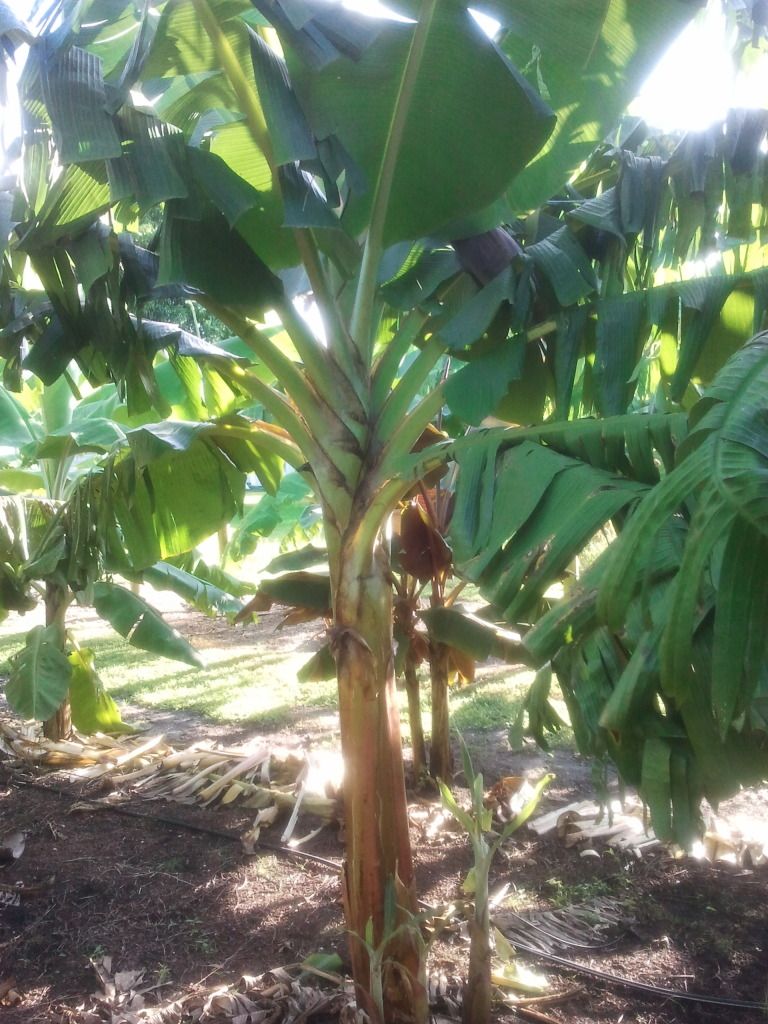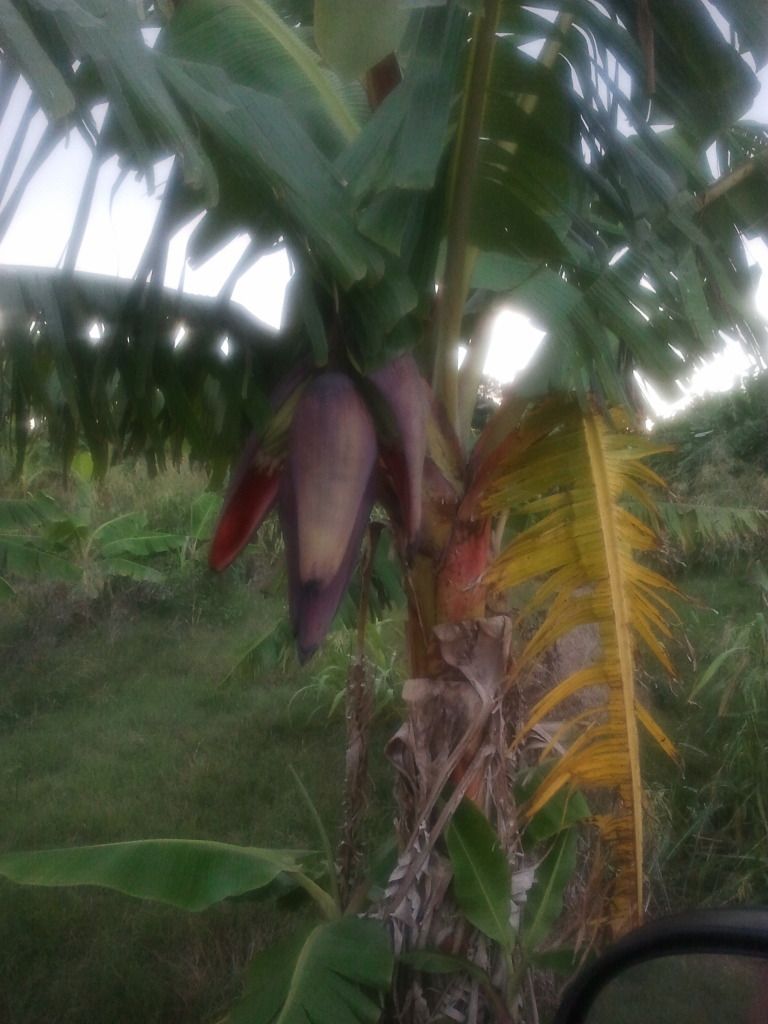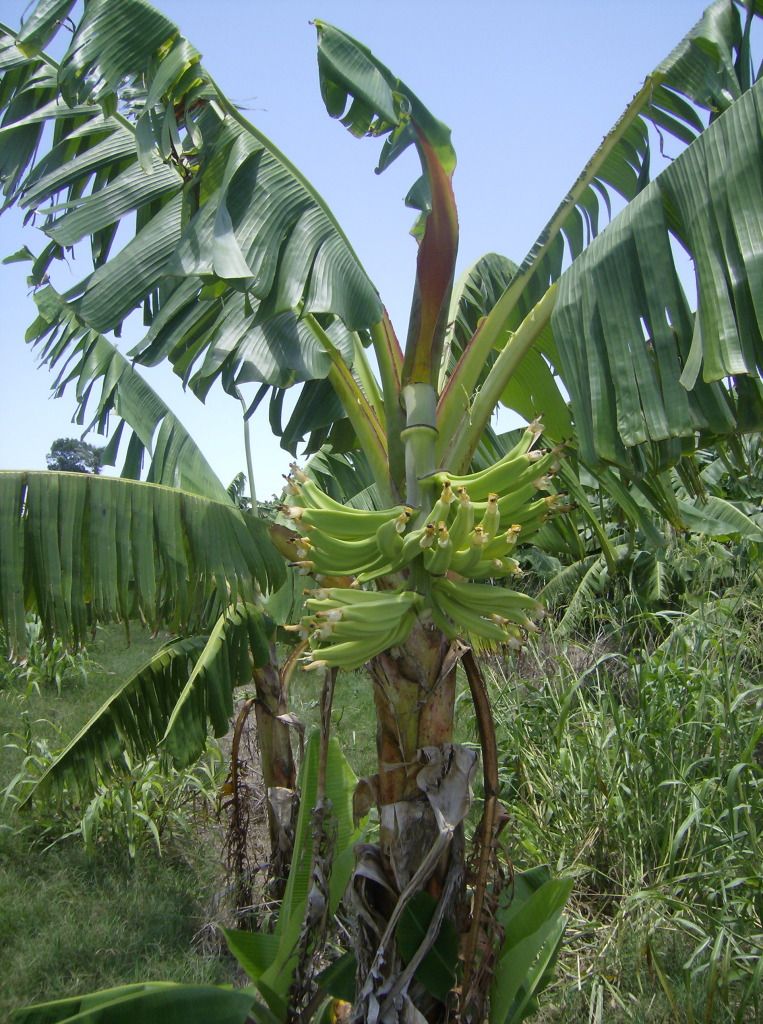Musa Super Plantain
From Bananas Wiki
(Difference between revisions)
| Revision as of 15:50, 16 March 2007 (edit) Theflyingdutchman-658 (Talk | contribs) ← Previous diff |
Current revision (08:20, 9 October 2012) (edit) NicolasNaranja-4368 (Talk | contribs) (→Pictures) |
||
| Line 1: | Line 1: | ||
| ==Cultivar Name== | ==Cultivar Name== | ||
| + | |||
| + | Musa 'super plantain' | ||
| ===Synonyms=== | ===Synonyms=== | ||
| ==Pictures== | ==Pictures== | ||
| + | |||
| + | http://i1182.photobucket.com/albums/x455/NicolasNaranja/2012-10-03172645.jpg | ||
| + | |||
| + | http://i1182.photobucket.com/albums/x455/NicolasNaranja/2011-06-13184109.jpg | ||
| + | |||
| + | http://i1182.photobucket.com/albums/x455/NicolasNaranja/HPIM1027-1.jpg | ||
| ==Description== | ==Description== | ||
| + | |||
| + | This is a popular variety, which grows to about 12 feet high in the standard form and 6' high in the dwarf form. The fruit is terrific and is a staple | ||
| + | of Caribbean and Latin cuisine. The superplantain and dwarf superplantain are french-type bunch reversion sports of Maricongo and Common dwarf plantain respectively. This plantain produces a high quantity of plantains that are smaller than the plantains typical of the false-horn plants it is derived from. | ||
| *Genetic Group - | *Genetic Group - | ||
| Line 14: | Line 25: | ||
| ===Usage=== | ===Usage=== | ||
| + | Type cooking | ||
| ==Flowering== | ==Flowering== | ||
| Line 23: | Line 35: | ||
| ==Cultivation== | ==Cultivation== | ||
| - | *Mature Height - | + | *Mature Height - 6' |
| *Survival Zone - | *Survival Zone - | ||
| + | |||
| + | 9-10 | ||
| *Fruiting Zone - | *Fruiting Zone - | ||
| - | *Cold Hardiness - | + | *Cold Hardiness - Less cold tolerant than other plantains |
| *Wind - | *Wind - | ||
| + | |||
| + | Heavy bunches cause toppling, pruned bunches alleviate problem | ||
| *Sun - | *Sun - | ||
| + | |||
| + | Full sun to no more than 30% shade | ||
| + | Temperatures best over 65F | ||
| *Taste Description - | *Taste Description - | ||
| - | *Personal Notes - | + | *Personal Notes - Higher quality fruit results from bunch pruning. This variety will likely produce 8-10 hands, however the bunch is highly conical and the lower hands have short fruit. |
| - | *Growth tips - | + | *Growth tips - For marketing purposes, it is better to prune the bunch back to 4-5 hands as soon as possible. |
| ===Known Afflictions=== | ===Known Afflictions=== | ||
| *Pests - | *Pests - | ||
| + | |||
| + | Thrips, Borers, grasshoppers and root nematodes | ||
| *Susceptible Diseases - | *Susceptible Diseases - | ||
| - | *Resistant Diseases - | + | Panama disease, black sigatoka, cordana leaf spot, cigar end rot |
| + | |||
| + | *Resistant Diseases - | ||
| ==Research Notes== | ==Research Notes== | ||
Current revision
Contents |
[edit]
Cultivar Name
Musa 'super plantain'
[edit]
Synonyms
[edit]
Pictures



[edit]
Description
This is a popular variety, which grows to about 12 feet high in the standard form and 6' high in the dwarf form. The fruit is terrific and is a staple of Caribbean and Latin cuisine. The superplantain and dwarf superplantain are french-type bunch reversion sports of Maricongo and Common dwarf plantain respectively. This plantain produces a high quantity of plantains that are smaller than the plantains typical of the false-horn plants it is derived from.
- Genetic Group -
[edit]
Origin
- Date realized in trade -
[edit]
Usage
Type cooking
[edit]
Flowering
- Time To Bloom -
- Time To Harvest -
[edit]
Cultivation
- Mature Height - 6'
- Survival Zone -
9-10
- Fruiting Zone -
- Cold Hardiness - Less cold tolerant than other plantains
- Wind -
Heavy bunches cause toppling, pruned bunches alleviate problem
- Sun -
Full sun to no more than 30% shade Temperatures best over 65F
- Taste Description -
- Personal Notes - Higher quality fruit results from bunch pruning. This variety will likely produce 8-10 hands, however the bunch is highly conical and the lower hands have short fruit.
- Growth tips - For marketing purposes, it is better to prune the bunch back to 4-5 hands as soon as possible.
[edit]
Known Afflictions
- Pests -
Thrips, Borers, grasshoppers and root nematodes
- Susceptible Diseases -
Panama disease, black sigatoka, cordana leaf spot, cigar end rot
- Resistant Diseases -
[edit]
Research Notes
- Links to useful discussion threads in the forum:
- Typical Price Range -
[edit]
Members Growing This Banana
[edit]
External
- Links
- (Links to other useful pages on the web that mention this banana. Example: International Banana Society)
- Sources
